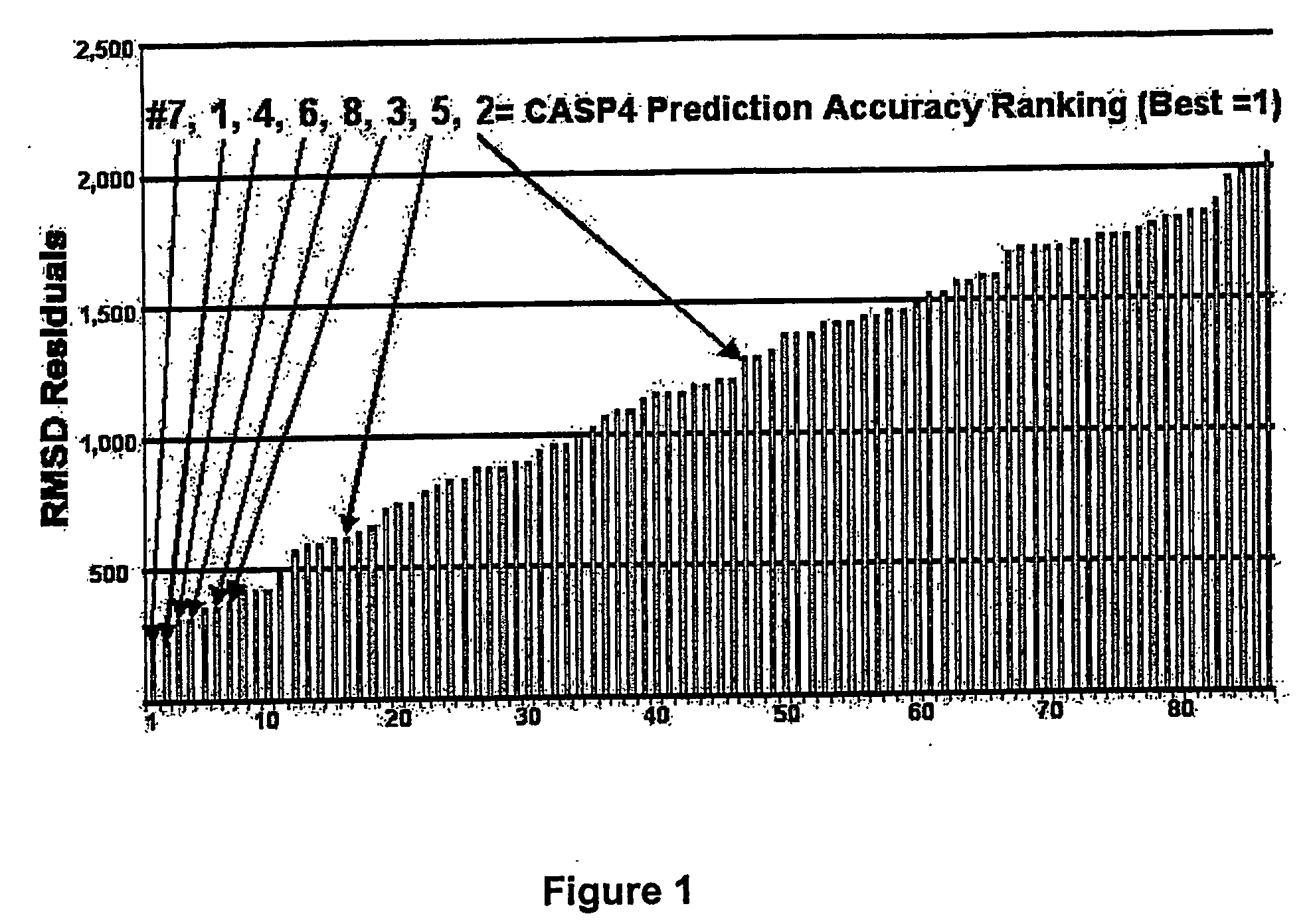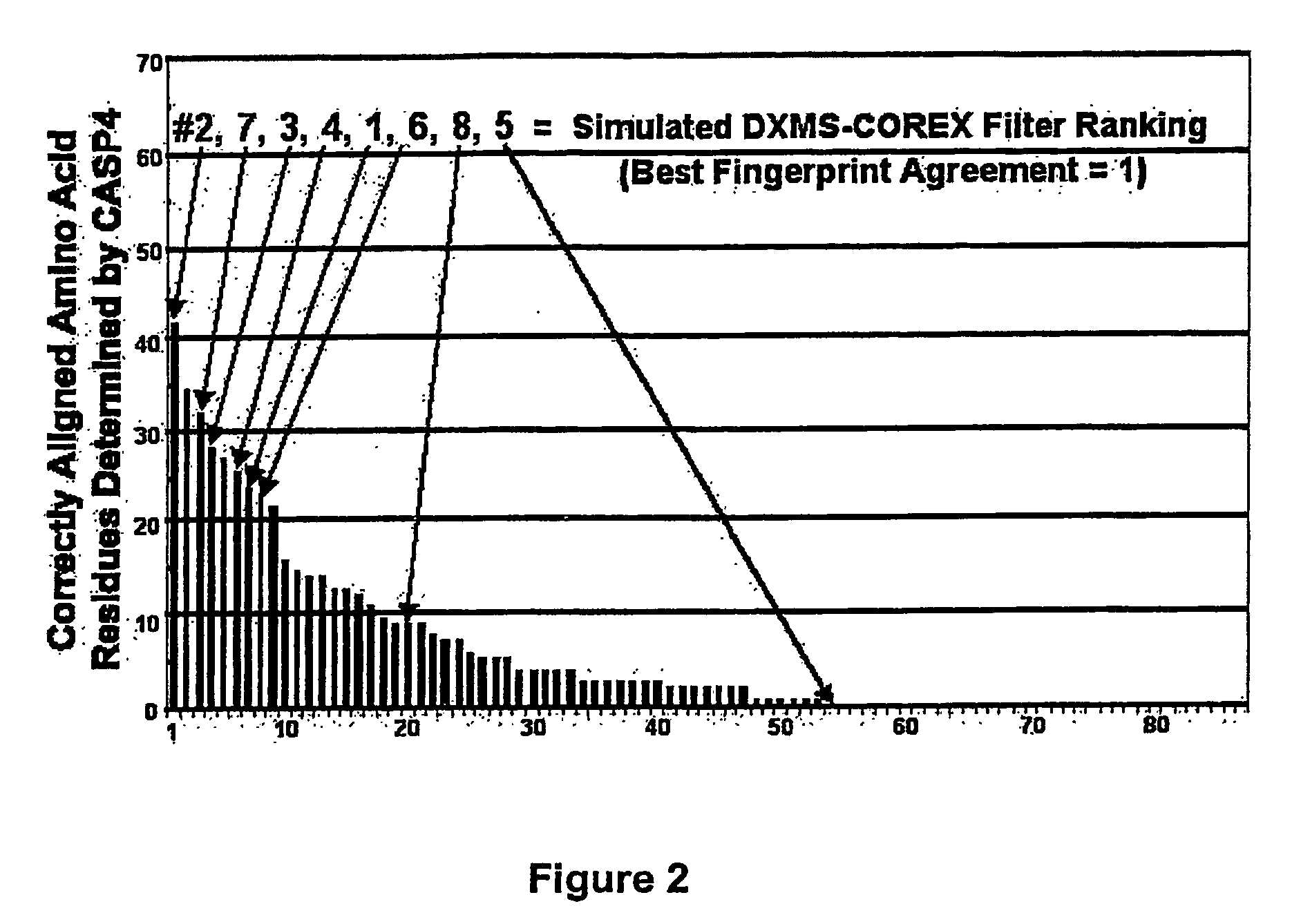Methods for the determination of protein three-dimensional structure employing hydrogen exchange analysis to refine computational structure prediction
- Summary
- Abstract
- Description
- Claims
- Application Information
AI Technical Summary
Benefits of technology
Problems solved by technology
Method used
Image
Examples
example 1
Rapid Refinement of Crystallographic Protein Construct Definition Employing Enhanced Hydrogen / Deuterium Exchange Mass Spectrometry (DXMS)
[0228] It is widely anticipated that access to high-resolution protein structures will be facilitated by novel high-throughput improvements to conventional crystallographic methods. Proteome-wide crystallography is one avenue being pursued by several groups, including the Joint Center for Structural Genomics (JCSG) (Lesley, et al. Proc Natl Acad Sci USA 99:11664-9. 2002, Stevens, et al. Science 293:519-520 2001, Stevens, et al. Science 294:89-92 2001). These efforts have benefited greatly from recent technology enhancements in protein expression and crystallization. Despite these enhancements, production of stable proteins that produce suitable crystals continues to be a serious bottleneck. Many generally well-structured proteins contain disordered regions that may serve as passive linkers between structurally autonomous domains, or become ordered...
example 2
Stability of a Two Repeat Fragment of Chicken Brain α-Spectrin Probed at High Resolution by Enhanced Hydrogen / Deuterium Exchange Mass Spectrometry (DXMS): Implications for the Molecular Mechanisms of Spectrin Elasticity
[0253] Spectrin is a cytoskeletal protein involved in maintaining structural support and membrane elasticity. It includes an α-monomer of 21 tandem repeats, with each repeat composed of three well-formed, long antiparallel α-helices connected by short turns or loops, forming a “z”-shaped three-helix bundle (Grum, et al. Cell 98:523-35. 1999). It functions, in part, as an elastic molecule, demonstrating a distinctive “sawtoothed” compliance behavior, where tension remains within a relatively narrow range despite considerable lengthening. To better understand the molecular basis of this behavior, the structural stability of α-spectrin is determined herein, at near-individual amino acid scale, with enhanced methods of peptide amide hydrogen-deuterium exchange-mass spect...
PUM
 Login to View More
Login to View More Abstract
Description
Claims
Application Information
 Login to View More
Login to View More - R&D
- Intellectual Property
- Life Sciences
- Materials
- Tech Scout
- Unparalleled Data Quality
- Higher Quality Content
- 60% Fewer Hallucinations
Browse by: Latest US Patents, China's latest patents, Technical Efficacy Thesaurus, Application Domain, Technology Topic, Popular Technical Reports.
© 2025 PatSnap. All rights reserved.Legal|Privacy policy|Modern Slavery Act Transparency Statement|Sitemap|About US| Contact US: help@patsnap.com



